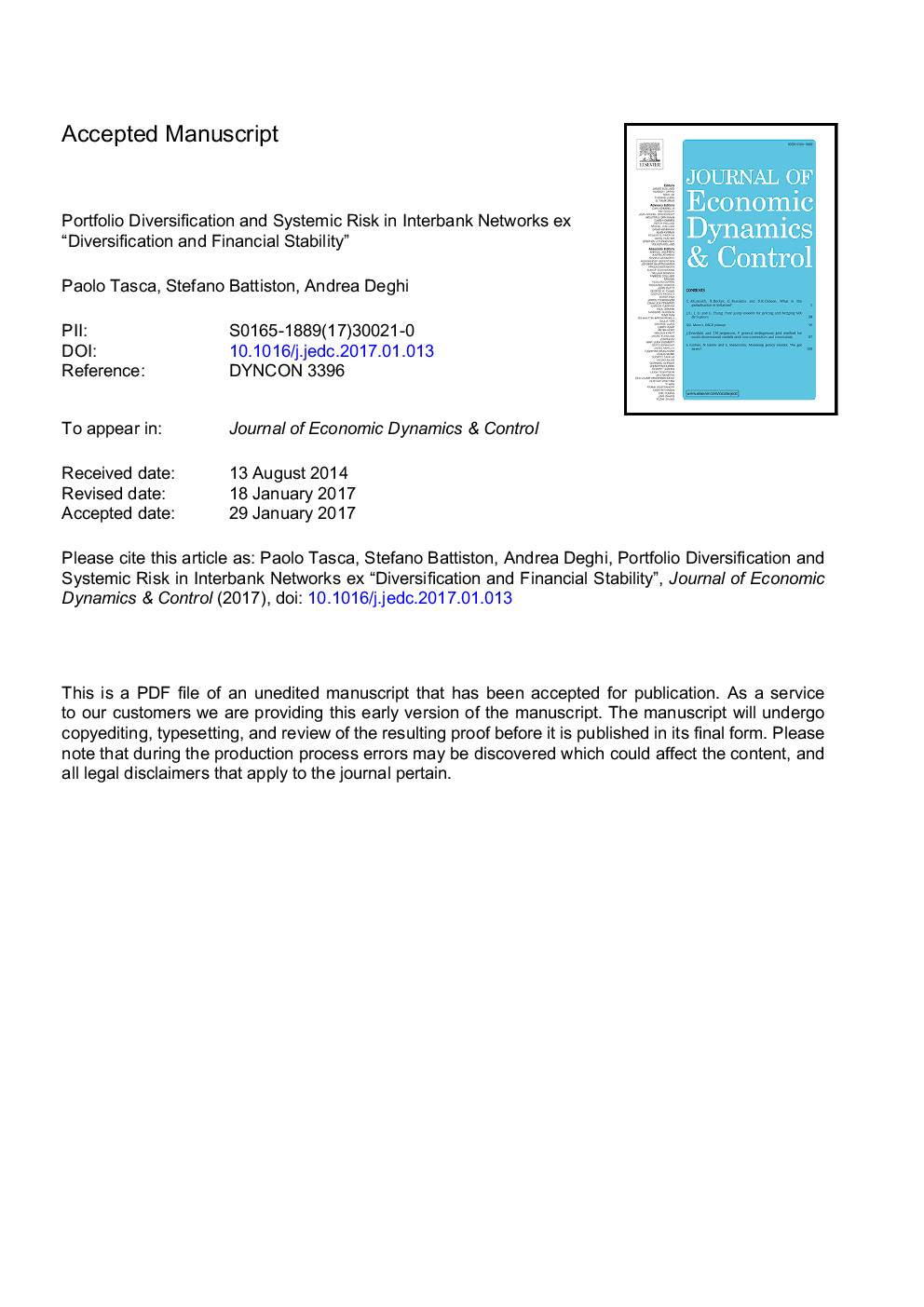| Article ID | Journal | Published Year | Pages | File Type |
|---|---|---|---|---|
| 5097976 | Journal of Economic Dynamics and Control | 2017 | 62 Pages |
Abstract
This paper contributes to a growing literature on the ambiguous effects of risk diversification. In our model, banks hold claims on each other's liabilities that are marked-to-market on the individual financial leverage of the obligor. The probability of systemic default is determined using a passage-problem approach in a network context and banks are able to internalize the network externalities of contagion through their holdings. Banks do not internalize the social costs to the real economy of a systemic default of the banking system. We investigate the optimal diversification strategy of banks in the face of opposite and persistent economic trends that are ex-ante unknown to banks. We find that the optimal level of risk diversification may be interior or extremal depending on banks exposure the external assets and that a tension arises whereby individual incentives favor a banking system that is over-diversified with respect to the level of diversification that is desirable in the social optimum.
Keywords
Related Topics
Physical Sciences and Engineering
Mathematics
Control and Optimization
Authors
Paolo Tasca, Stefano Battiston, Andrea Deghi,
